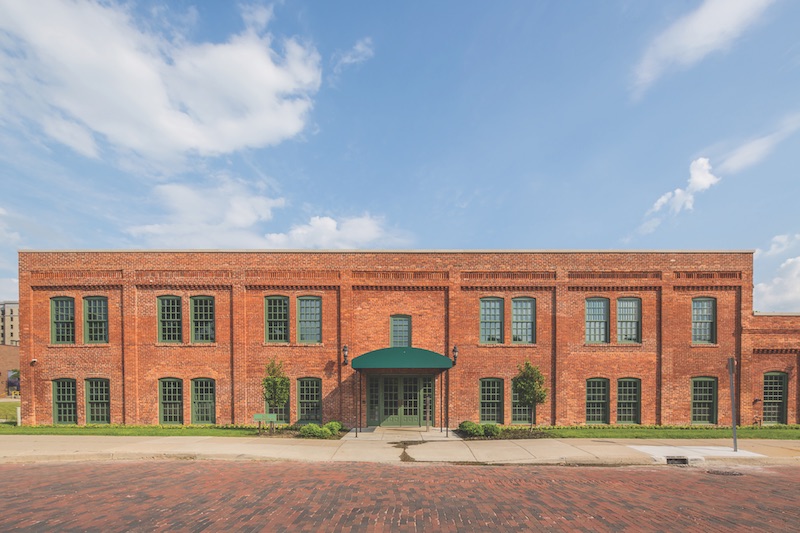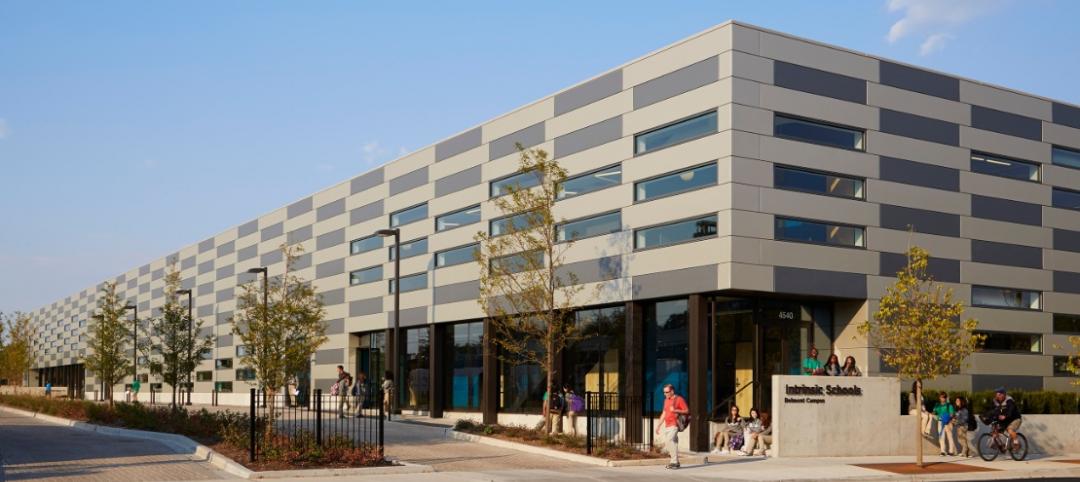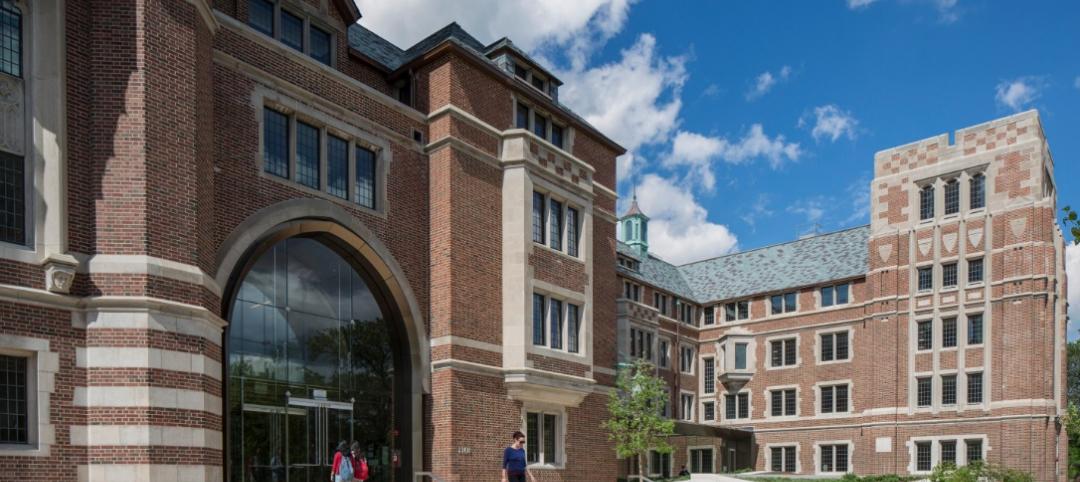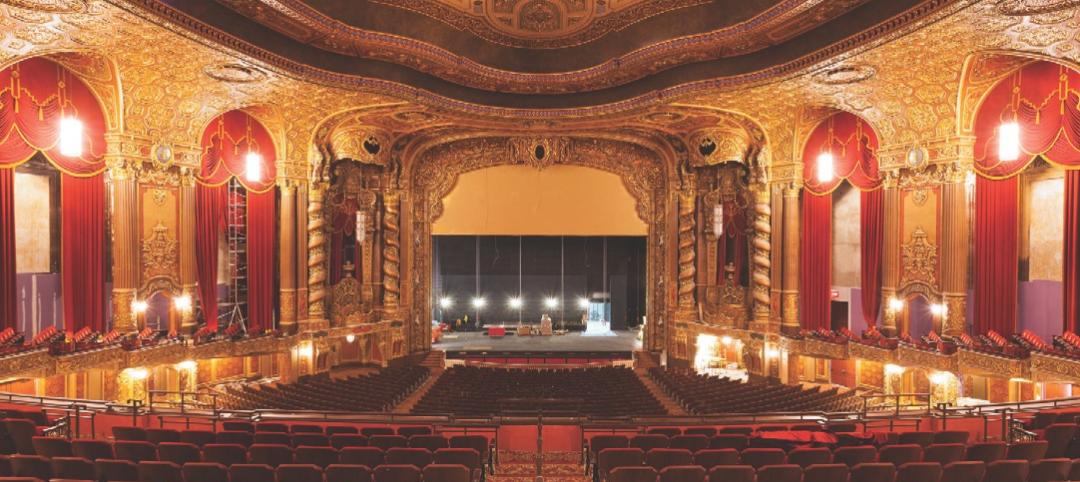When William Crapo “Billy” Durant and Josiah Dallas Dort leased a cotton mill in Flint, Mich., in 1886 for their new carriage-building business, no one could have predicted that, 22 years later, Durant would gain control of Buick Motor Company from its founder, David Dunbar Buick, and form General Motors Company. The old cotton mill, known as Durant-Dort Factory One, is regarded by historians as the place where GM was born.
Over the years, Factory One went through hard times. Four years ago, General Motors formed a collaboration with the Durant-Dort Office Carriage Company Foundation, the Genesee County Historical Society, and Kettering University to save this important piece of Flint and automotive history. GM bought the 30,184-sf building and brought in SmithGroupJJR and Brencal Contractors to turn the building into offices, an archival center, and event space.
By 2014, the National Historic Landmark had seen better days. The grade of the building had fallen 18 inches. Runoff submerged the first floor and eroded the brick masonry bearing walls, causing foundation settling. The project team replaced 17,000 damaged bricks with color-matched substitutes. Five thousand linear feet of mortar, representing 20% of the mortar on the building, was carefully blended to match the color of the existing mixture.
A new roof, new doors, and custom mahogany divided-pane windows were installed. The windows were painted green to match the historic Durant-Dort Carriage Company building across the street.
Portions of the second level dipped 9½ inches. These areas were leveled with a new raised subfloor in which power and data communications were installed. The renovation of the second story now provides a workspace, kitchenette, and meeting areas for GM employees. Factory One also provides space for community groups to rent for events.
The building houses a GM carriage-building and vehicle-manufacturing collection of more than 100,000 documents, some of which date to the late 19th century. To protect the archives from temperature variation and humidity, SmithGroupJJR designed a glass-encased, vapor-sealed room in the center of the building. A mechanical system maintains a temperature of 72° F (plus/minus two degrees) and a relative humidity of 50% (plus/minus 5%).
 A two-story entry hall was carved out of the existing structure. The grade of the original building was 18 inches below what it was in the 1880s, causing water damage, and had to be remediated. Photo: © Jason Robinson Photography.
A two-story entry hall was carved out of the existing structure. The grade of the original building was 18 inches below what it was in the 1880s, causing water damage, and had to be remediated. Photo: © Jason Robinson Photography.
Project Summary
Silver Award Winner
Building Team: SmithGroupJJR (submitting firm, architect, AOR, interior architect, SE, MEP). Brencal Contractors Inc. (GC).
Details: 30,184 sf. Total cost: $8.7 million. Construction time: August 2014 to May 2017. Delivery method: Design-bid-build.
See all of the 2017 Reconstruction Award winners here
Related Stories
Reconstruction Awards | Nov 16, 2015
Lumberyard turned into Chicago charter school
While the existing structures were in poor condition, the Building Team preserved and restored 75% of the spaces and incorporated historic elements in the final design of the Intrinsic School on Chicago's Northwest side.
Reconstruction Awards | Nov 12, 2015
Columbia Grammar and Preparatory School grows with the times
The 251-year-old NYC school was a design-build project that overcame issues like tight space and zoning appeals during its redevelopment.
Reconstruction Awards | Nov 10, 2015
Restoration of the Whitney Building provides hope for Detroit
Four years ago, Whitney Partners purchased the 253,000-sf Whitney for $3.3 million. Their mission was to turn the 19-story structure into a mixed-use hotel, rental apartment, and retail center that would serve as a reminder of more prosperous times in Detroit’s past.
Reconstruction Awards | Nov 9, 2015
University of Chicago uses space economically with Saieh Hall
The five-story, 100,000-sf seminary was converted into a modern education facility that would be fully integrated into the university’s Hyde Park campus. The project demonstrated the university’s commitment to finding a balance between new construction and adaptive reuse of historically significant buildings.
Reconstruction Awards | Nov 9, 2015
King of kings: Classic brooklyn movie theater stages a return engagement
The theater, which withstood vacancy, neglect and vandalism, has been redeveloped with a goal: balance preservation with the creation of a modern performance space.












